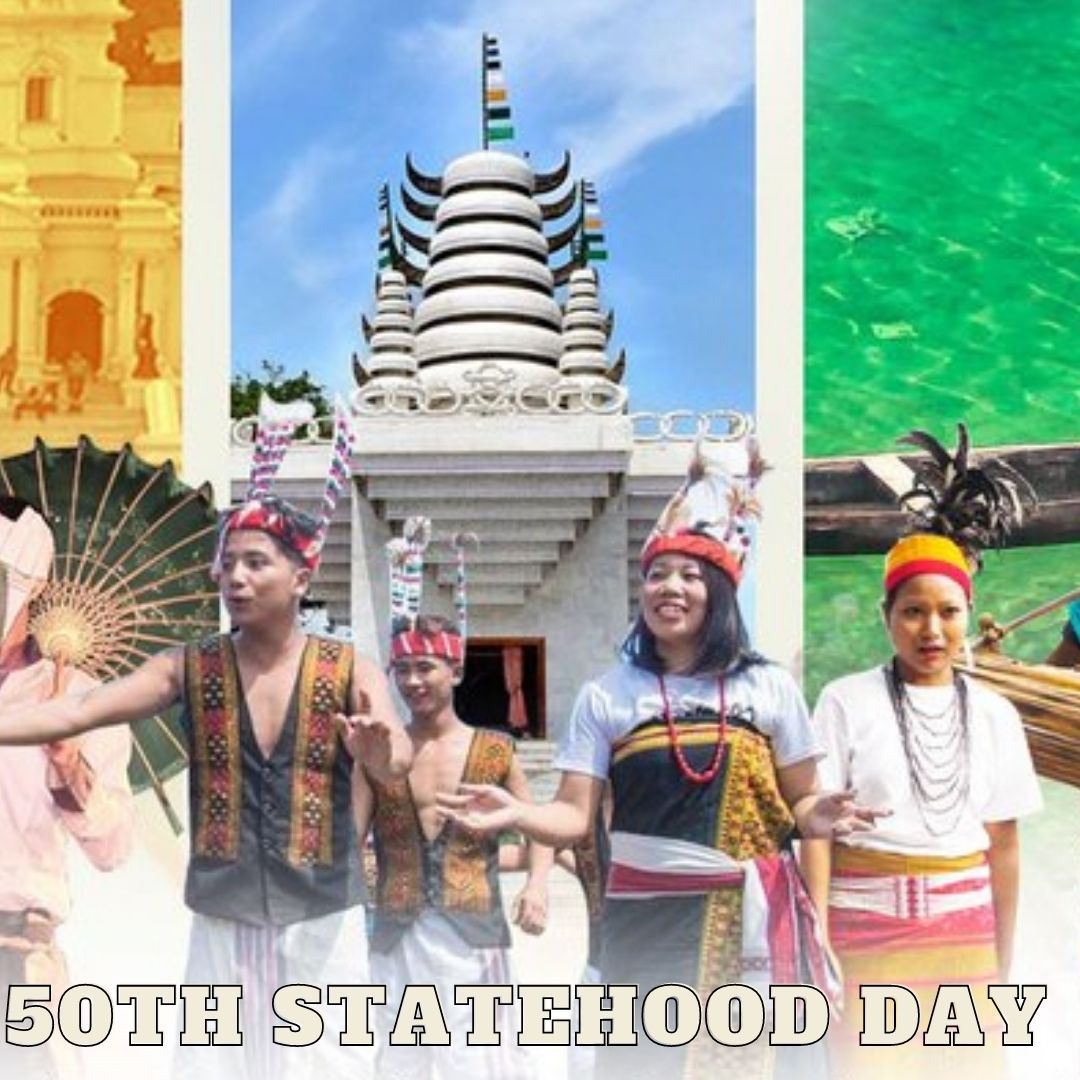
Image Credits: Twitter/ Ministry Of Railways
50th Statehood Day: Know How Manipur, Meghalaya and Tripura Were Formed Into States On This Day In 1972
Writer: Tashafi Nazir
For most people, journalism sounds hectic and chaotic. For her, it's a passion she has been chasing for years. With an extensive media background, Tashafi believes in putting efforts on presenting a simple incident in the most interesting way.
India, 21 Jan 2022 10:35 AM GMT
Editor : Shiva Chaudhary |
A post-graduate in Journalism and Mass Communication with relevant skills, specialising in content editing & writing. I believe in the precise dissemination of information based on facts to the public.
Creatives : Tashafi Nazir
For most people, journalism sounds hectic and chaotic. For her, it's a passion she has been chasing for years. With an extensive media background, Tashafi believes in putting efforts on presenting a simple incident in the most interesting way.
Today marks the 50th anniversary of the formation of the states, which were created on this day in 1972. While Manipur and Tripura were princely states which were absorbed into India in October 1949, Meghalaya, on the other hand, was part of Assam. The states came into being the North-Eastern Areas (Reorganisation) Act, 1971, enacted on December 30 that year.
Statehood Day is celebrated every year as Manipur, Meghalaya, and Tripura on January 21, 1972, attained statehood under the North Eastern Region (Reorganization) Act of 1971. Earlier before the north-eastern region was turned into seven sisters with the statehood of Manipur, Tripura, Meghalaya, Assam, Mizoram, Arunachal Pradesh, and Nagaland, the North Eastern composition consisted of Assam plains from the old Assam Province, the hill districts, and the North Eastern Frontier Tracts (NEFT) of the North-Eastern borderland.
Today marks the 50th anniversary of the formation of the states, which were created on this day in 1972. While Manipur and Tripura were princely states which were absorbed into India in October 1949, Meghalaya, on the other hand, was part of Assam. The states came into being the North-Eastern Areas (Reorganisation) Act, 1971, enacted on December 30 that year. It resulted in a significant change in the boundaries of India's north-eastern region, dividing it into states and union territories.
The Reorganisation Act mandated the creation of the states of Manipur and Tripura, which were union territories earlier. It also set in stone the formation of the state of Meghalaya. In addition, the then union territories of Mizoram and Arunachal Pradesh also came into being courtesy of the Act.
Meghalaya
Apart from accounts of the more essential Khasi kingdoms in the chronicles of the neighbouring Ahoms and Kacharis, little is known of Meghalaya prior to the British rule. However, in the early 19th century, the British desire to build a road through the region to link Bengal and Assam led to a treaty with the ruler (Syiem) of the Khasi principality of Nonkhlaw. In 1829, opponents of the treaty persuaded the Syiem to repudiate it, and a subsequent attack on Britishers led inevitably to its military operations against the Khasis. By the mid-1830s, most local rulers had submitted to the British. For the next century, the British exercised its political control over the area, then known as the Garrows and Cossiya (Khasi) States, but the tribals who were left to fend themselves managed to preserve their traditional culture in seclusion.
In 1947, the rulers of the region acceded to the newly independent India. The first prime minister Jawaharlal Nehru evolved a policy to preserve and protect the culture of the tribal people. The region was given special protection in the Indian constitution along with other tribal areas, and it retained a great deal of autonomy.
In 1960, when Assamese became the state's official language, agitation for autonomy and self-rule gathered strength. Unlike many other hill regions in north-eastern India, this movement was largely peaceful and constitutional. In 1970, Meghalaya became an autonomous state within Assam and achieved full statehood on January 21, 1972.
Manipur
Over 500 princely states had negotiated their accession to the Indian union before independence. According to News Nine, the rulers of these states signed a document called the 'Instrument of Accession'.
On August 11, 1947, Bodhachandra Singh, then Maharaja of Manipur, signed the document. He had been assured that the autonomy of Manipur would be maintained.
Elections were held in Manipur in June 1948, but its legislative assembly had differences of opinion on the merger. However, the Maharaja signed a Merger Agreement with India in September 1949. "On and from the appointed day there shall be established a new State, to be known as the State of Manipur, comprising the territories which immediately before that day were comprised in the union territory of Manipur," the Act said in 1971.
Tripura
Maharajas of the Manikya dynasty ruled the former princely state of Tripura. It was an independent administrative unit under the Maharaja even during British rule in India. However, according to Tripura State Portal, this independence was qualified, subject to the Britishers' recognition, as the paramount power of each successive ruler.
As per Rajmala, in the royal chronology of Tripura, around 184 kings ruled over the state before it merged with the Indian Union on October 15, 1949. Since then, the history of Tripura has been interspersed with various political, economic and social developments. On January 26, 1950, Tripura was accorded the status of a 'C' category state, and on November 1, 1956, it was recognised as a Union Territory. With its people's sustained efforts and struggle, it gained full statehood on January 21, 1972, as per the North-East Reorganisation Act, 1971. Its democratic set-up further stretched to the village level in 1978 with an election to the local bodies that ultimately culminated in introducing a three-tier Panchayati Raj System.
Also Read: How Did Lal Bahadur Shastri's Sudden Demise Pave The Way For Indira Gandhi's Political Career?
 All section
All section














